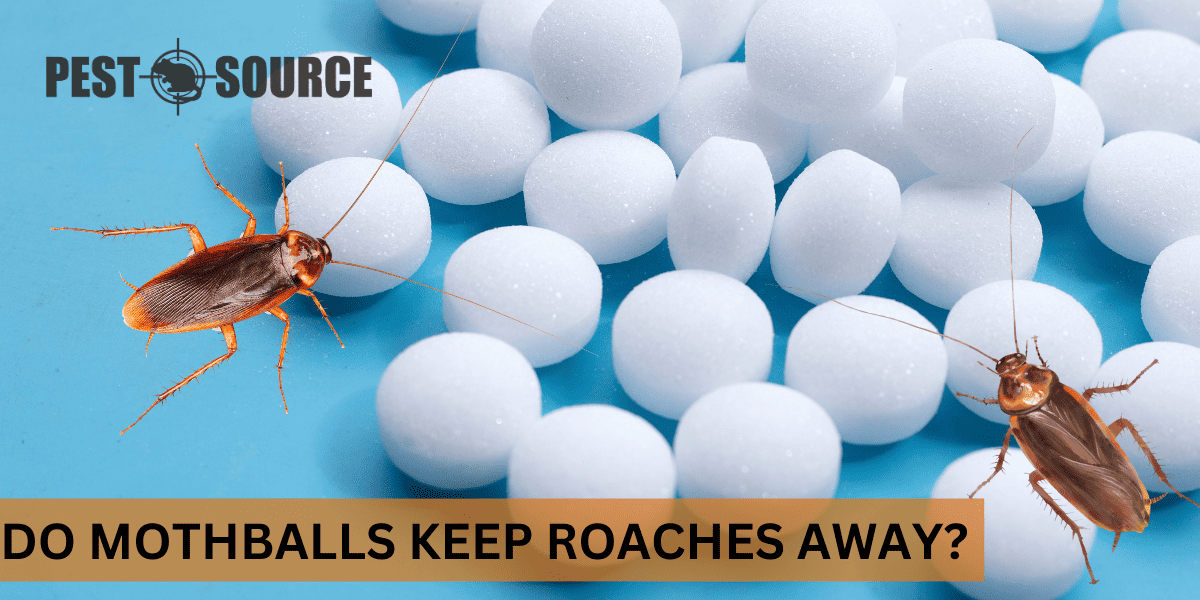While mothballs can repel roaches due to their strong odor, they are not recommended due to their toxicity to humans and pets. Learn about safer and more effective alternatives in this comprehensive guide.
POINTS
- Mothballs, containing naphthalene and paradichlorobenzene, are intended for moth and fabric pest control and are not effective against roaches, which require specific treatments.
- Using mothballs in a manner inconsistent with their labeling, such as for roach control in open areas, poses significant health risks to humans and pets and is illegal according to the Environmental Protection Agency (EPA).
- Effective roach control strategies include maintaining cleanliness, sealing entry points, proper food storage, using baits and traps, and seeking professional pest control services when necessary.
- Natural remedies for roach control, such as diatomaceous earth, boric acid, and essential oils, can be part of an integrated pest management approach but may not be as immediately effective as traditional methods.
- Experts in pest control advise against the use of mothballs for roaches, recommending more targeted and safe methods, and personal anecdotes should not be considered scientific evidence for their efficacy against roaches.
Understanding the Efficacy and Mechanism of Mothballs for Cockroaches
When it comes to dealing with roaches, homeowners are often ready to try anything to rid their living spaces of these persistent pests. One common question that arises is: Do mothballs keep roaches away? In this section, we’ll explore whether mothballs are an effective repellent or killer of roaches, and understand the mechanism behind how they work.
The Active Ingredients in Mothballs
Mothballs are small balls of chemical pesticide and deodorant, commonly used to protect clothing from moths and other fabric pests. The primary active ingredients in mothballs are naphthalene and paradichlorobenzene. Both chemicals are solid at room temperature and produce vapors that can kill and repel moths and their larvae.
Scientific Evidence on Mothballs Against Roaches
While mothballs are designed for moth and fabric pest control, their effectiveness against roaches has been a topic of discussion. To address this, we must examine scientific studies and expert opinions. Research indicates that naphthalene and paradichlorobenzene vapors are not as effective against roaches as they are against the pests they are intended for. Roaches, known for their survival skills, require specific treatments for control and eradication. Thus, relying on mothballs for roach control may not yield the desired results and could even lead to resistance among the roach population.
Health, Safety, and Legal Aspects of Using Mothballs for Roach Control
Using mothballs for roach control is not just a question of efficacy but also involves health, safety, and legal considerations. Let’s delve into these aspects to understand why using mothballs for anything other than their intended purpose could be problematic.
Potential Health Risks and Safety Concerns
Mothballs release toxic vapors which are meant to be contained within sealed spaces where moths are a problem. When used in open living areas to deter roaches, these vapors can pose significant health risks to humans and pets. Exposure to naphthalene and paradichlorobenzene can lead to headaches, nausea, dizziness, and in severe cases, damage to red blood cells or liver and kidney issues. It’s crucial to use mothballs strictly as directed to avoid these health hazards.
Legal Restrictions and Guidelines
The Environmental Protection Agency (EPA) regulates the use of naphthalene and paradichlorobenzene in mothballs. It is illegal to use mothballs in a manner inconsistent with their labeling. Therefore, using them for roach control in open areas can lead to legal repercussions. It’s important to follow the guidelines set forth by regulatory agencies to ensure safe and legal pest control practices.
Environmental Considerations
Environmental impact is another concern when it comes to the improper use of mothballs. These chemicals can contaminate air, soil, and water, posing risks to wildlife and the ecosystem. Responsible use of pest control products is essential to minimize environmental harm.
Alternatives to Mothballs and Effective Roach Control Strategies
Given the concerns associated with using mothballs for roach control, it’s important to explore proven and safe methods for managing these pests. Let’s discuss some effective strategies that can help keep roaches at bay without the risks posed by mothballs.
Proven Methods for Controlling Roaches
Effective roach control involves a combination of cleanliness, preventive measures, and the use of appropriate pest control products. Here are some strategies that have been shown to work:
- Maintain Cleanliness: Regularly clean your home, especially the kitchen and bathroom, to remove food particles and moisture that attract roaches.
- Seal Entry Points: Close off any cracks or crevices in walls, around windows, and doors to prevent roaches from entering.
- Proper Food Storage: Store food in airtight containers to avoid attracting roaches with accessible food sources.
- Use Baits and Traps: Roach baits and traps are effective at reducing the population by targeting roaches where they hide.
- Professional Pest Control: Sometimes, the infestation may be too large to handle on your own. In such cases, professional pest control services can provide more comprehensive solutions.
Natural Remedies and Their Efficacy
For those seeking a more natural approach to roach control, several remedies can be considered. These include:
- Diatomaceous Earth: A non-toxic powder that can be used to kill roaches by damaging their exoskeletons.
- Boric Acid: When used correctly, this substance can be an effective roach killer, although it should be kept away from children and pets.
- Essential Oils: Some essential oils, like peppermint, may help repel roaches when used in high concentrations.
While natural remedies can be part of an integrated pest management approach, they may not always be as immediately effective as traditional pest control methods. It’s important to assess the level of infestation and choose the most appropriate treatment.
User Experiences, Misconceptions
To round off our discussion, it’s valuable to consider real-world experiences and address common misconceptions about the use of mothballs for roach control.
Real-World Testimonials
Some homeowners may swear by the use of mothballs to deter roaches, but these anecdotes do not equate to scientific evidence. Personal experiences can vary widely and are influenced by many factors, including the severity of the infestation and the use of other control measures.
Addressing Common Misconceptions
One of the biggest misconceptions is that if a substance is effective against one type of pest, it must be effective against others. This is not the case with mothballs, as their ingredients are specifically targeted towards moths and their larvae, not roaches.
Expert Opinions
Experts in pest control typically advise against the use of mothballs for roaches, recommending more targeted and safe methods instead. It’s critical to heed the advice of professionals who understand the behavior and biology of roaches for effective control.



